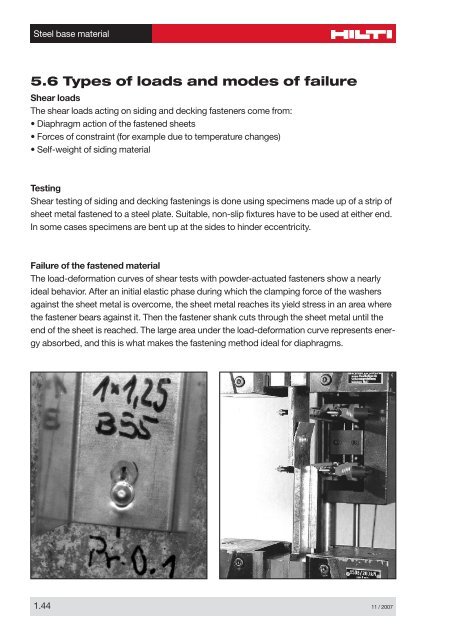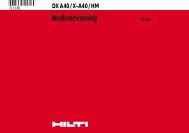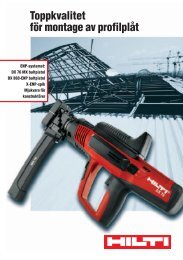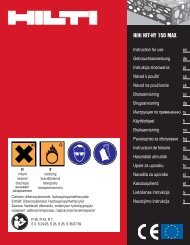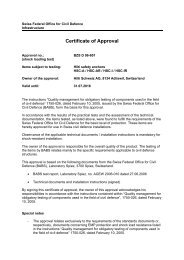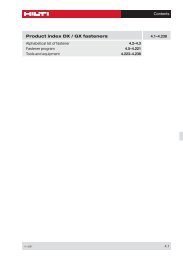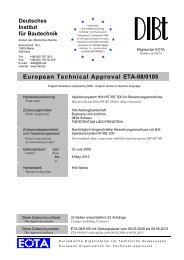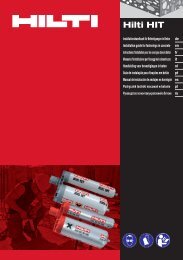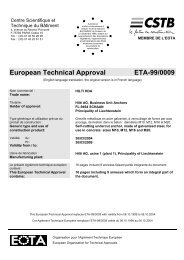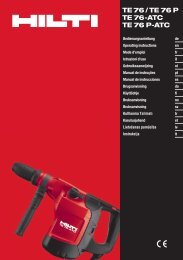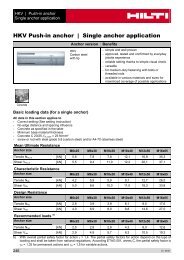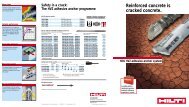00 Contents - Hilti Svenska AB
00 Contents - Hilti Svenska AB
00 Contents - Hilti Svenska AB
Create successful ePaper yourself
Turn your PDF publications into a flip-book with our unique Google optimized e-Paper software.
Steel base material<br />
5.6 Types of loads and modes of failure<br />
Shear loads<br />
The shear loads acting on siding and decking fasteners come from:<br />
• Diaphragm action of the fastened sheets<br />
• Forces of constraint (for example due to temperature changes)<br />
• Self-weight of siding material<br />
Testing<br />
Shear testing of siding and decking fastenings is done using specimens made up of a strip of<br />
sheet metal fastened to a steel plate. Suitable, non-slip fixtures have to be used at either end.<br />
In some cases specimens are bent up at the sides to hinder eccentricity.<br />
Failure of the fastened material<br />
The load-deformation curves of shear tests with powder-actuated fasteners show a nearly<br />
ideal behavior. After an initial elastic phase during which the clamping force of the washers<br />
against the sheet metal is overcome, the sheet metal reaches its yield stress in an area where<br />
the fastener bears against it. Then the fastener shank cuts through the sheet metal until the<br />
end of the sheet is reached. The large area under the load-deformation curve represents energy<br />
absorbed, and this is what makes the fastening method ideal for diaphragms.<br />
1.44 11 / 2<strong>00</strong>7


